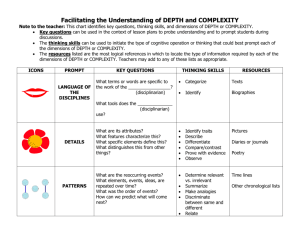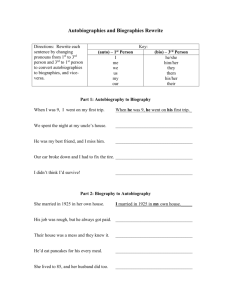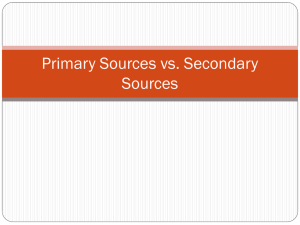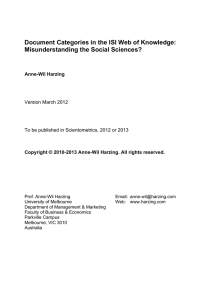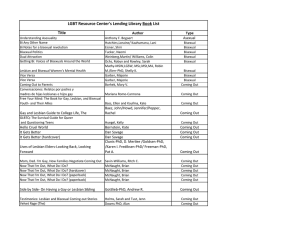Library: Information Literacy
advertisement
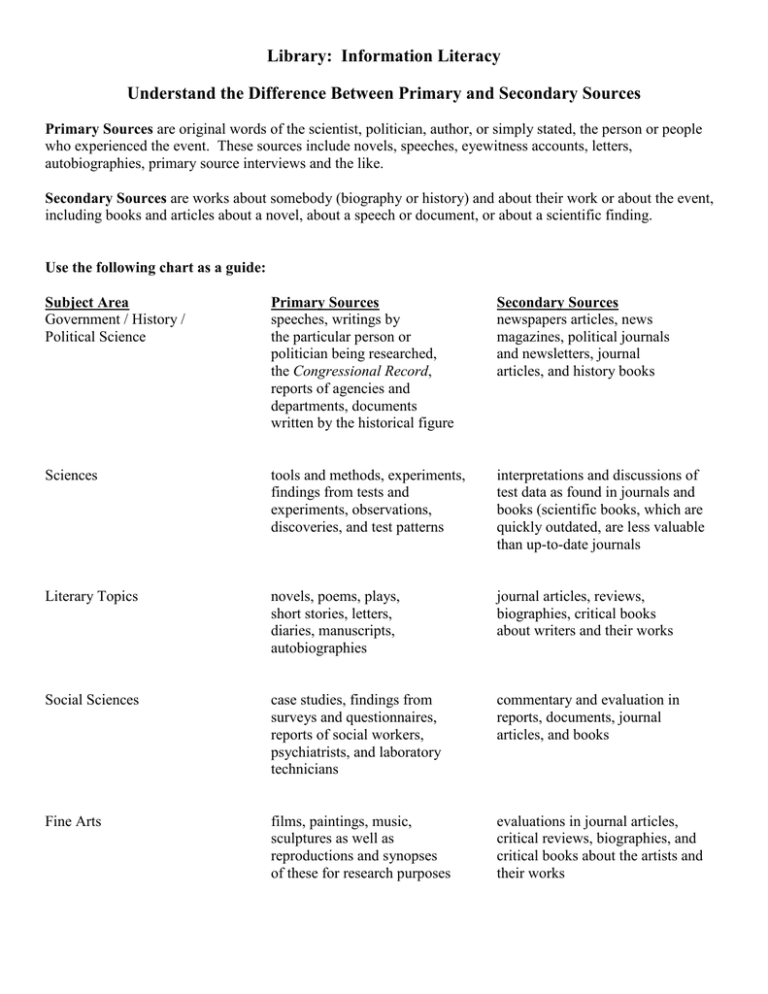
Library: Information Literacy Understand the Difference Between Primary and Secondary Sources Primary Sources are original words of the scientist, politician, author, or simply stated, the person or people who experienced the event. These sources include novels, speeches, eyewitness accounts, letters, autobiographies, primary source interviews and the like. Secondary Sources are works about somebody (biography or history) and about their work or about the event, including books and articles about a novel, about a speech or document, or about a scientific finding. Use the following chart as a guide: Subject Area Government / History / Political Science Primary Sources speeches, writings by the particular person or politician being researched, the Congressional Record, reports of agencies and departments, documents written by the historical figure Secondary Sources newspapers articles, news magazines, political journals and newsletters, journal articles, and history books Sciences tools and methods, experiments, findings from tests and experiments, observations, discoveries, and test patterns interpretations and discussions of test data as found in journals and books (scientific books, which are quickly outdated, are less valuable than up-to-date journals Literary Topics novels, poems, plays, short stories, letters, diaries, manuscripts, autobiographies journal articles, reviews, biographies, critical books about writers and their works Social Sciences case studies, findings from surveys and questionnaires, reports of social workers, psychiatrists, and laboratory technicians commentary and evaluation in reports, documents, journal articles, and books Fine Arts films, paintings, music, sculptures as well as reproductions and synopses of these for research purposes evaluations in journal articles, critical reviews, biographies, and critical books about the artists and their works

